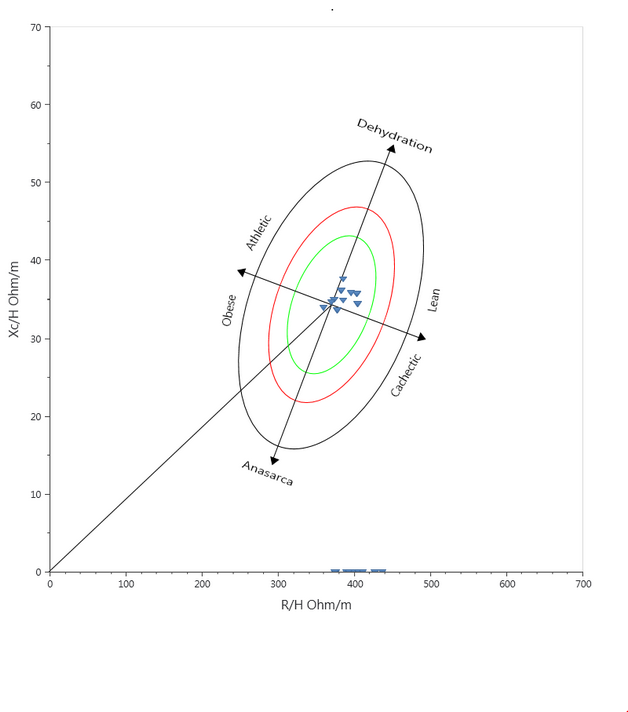What is BIVA?
BIVA is a method of interpreting the data obtained from some Bioelectrical Impedance Analysis devices. It is a quick abs simple pictorial way of discovering the hydration and nutritional status in comparison to their population group. It establishes where your client is in reference to their demographic.
BIVA is short for Bioelectrical impedance Vector Analysis and is sometimes referred to as the ‘Rxc Graph’. It was devised by Professor Antonio Piccoli in 1994 and is fairly well established. There are no complex mathematical equations involved in BIVA technology, it simply uses the Resistance(R) and Reactance (Xc) at 50 kHz and is normalised to the subject’s height (Weight is not required). Once the measurement is performed, the subject’s results are illustrated in the form of a dot on the vector. The position of the dot then reflects the subject’s health status in comparison to the subject’s chosen demographic group.

Graphical Representation
This graph shows a subject’s tests over time (the blue icons). The desired outcome for a physician is a mark within the 75% tolerance (the middle of the 3 tolerance lines) of the statistic distribution of the chosen demographic group.
The line from the point of origin indicates the Vector Length. The shorter this line, the more fluid overload or oedema is present. The linger the line, the more dehydration is present.
Consideration is then given to the angle of the vector. The steeper the angle, the more athletic or obese the subject is, whereas a shallow angle reflects malourishment or anorexia.
The Advantages
The use of the BIVA graph has many advantages. The measurement itself is performed using a single frequency device (50 kHz) giving the Phase Angle (PA) , Resistance (R) and Reactance (Xc). The only input data that is required is the height, gender and population group.
BIVA enables a subject’s hydration or BCM status to be evaluated based on raw data, independently of complex mathematical calculations. The BIVA graph also gives Physicians the confidence that the measurement is accurate and therefore the opportunity to retest immediately if clarification is required.